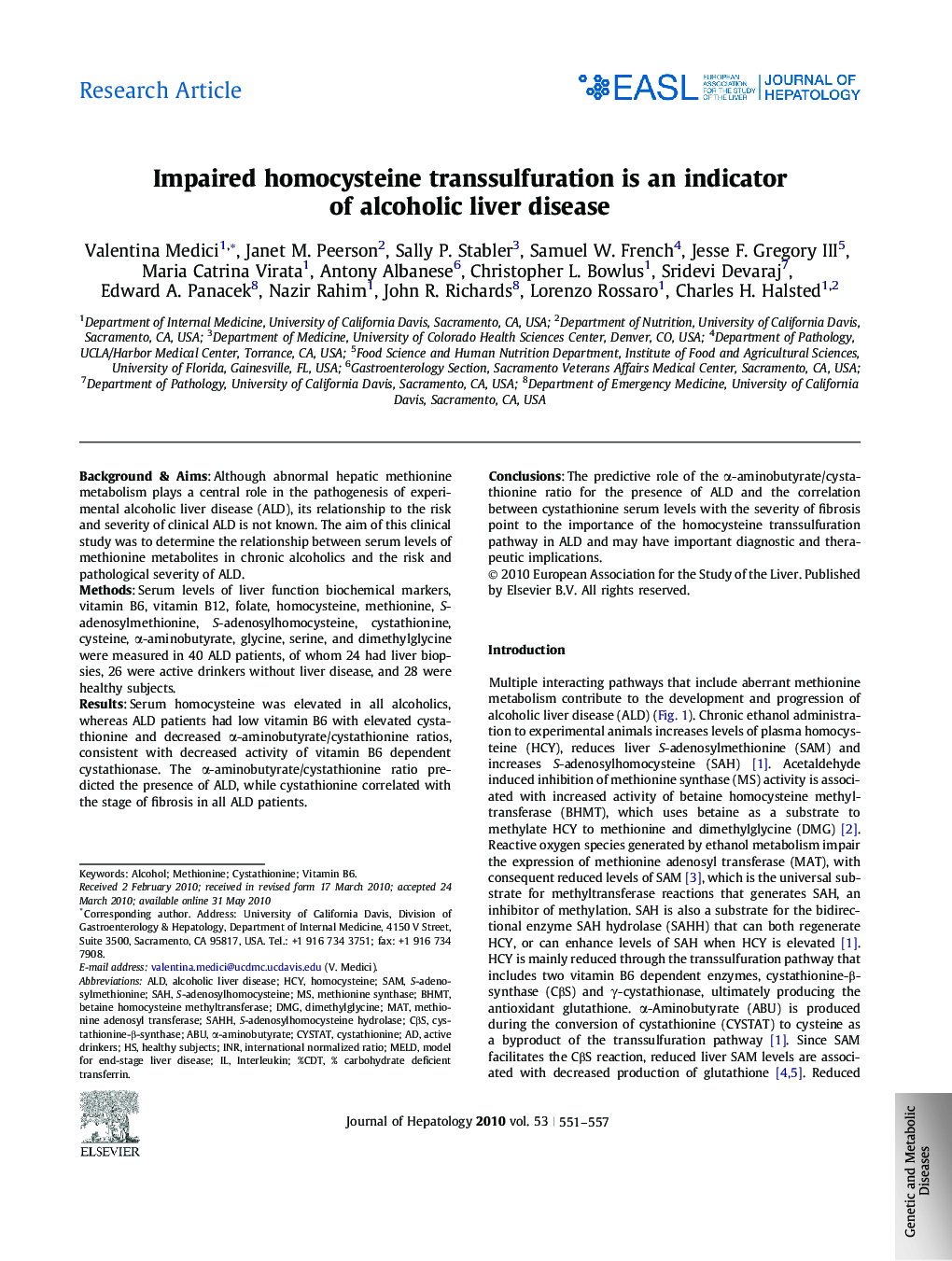| Article ID | Journal | Published Year | Pages | File Type |
|---|---|---|---|---|
| 6107055 | Journal of Hepatology | 2010 | 7 Pages |
Background & AimsAlthough abnormal hepatic methionine metabolism plays a central role in the pathogenesis of experimental alcoholic liver disease (ALD), its relationship to the risk and severity of clinical ALD is not known. The aim of this clinical study was to determine the relationship between serum levels of methionine metabolites in chronic alcoholics and the risk and pathological severity of ALD.MethodsSerum levels of liver function biochemical markers, vitamin B6, vitamin B12, folate, homocysteine, methionine, S-adenosylmethionine, S-adenosylhomocysteine, cystathionine, cysteine, α-aminobutyrate, glycine, serine, and dimethylglycine were measured in 40 ALD patients, of whom 24 had liver biopsies, 26 were active drinkers without liver disease, and 28 were healthy subjects.ResultsSerum homocysteine was elevated in all alcoholics, whereas ALD patients had low vitamin B6 with elevated cystathionine and decreased α-aminobutyrate/cystathionine ratios, consistent with decreased activity of vitamin B6 dependent cystathionase. The α-aminobutyrate/cystathionine ratio predicted the presence of ALD, while cystathionine correlated with the stage of fibrosis in all ALD patients.ConclusionsThe predictive role of the α-aminobutyrate/cystathionine ratio for the presence of ALD and the correlation between cystathionine serum levels with the severity of fibrosis point to the importance of the homocysteine transsulfuration pathway in ALD and may have important diagnostic and therapeutic implications.
